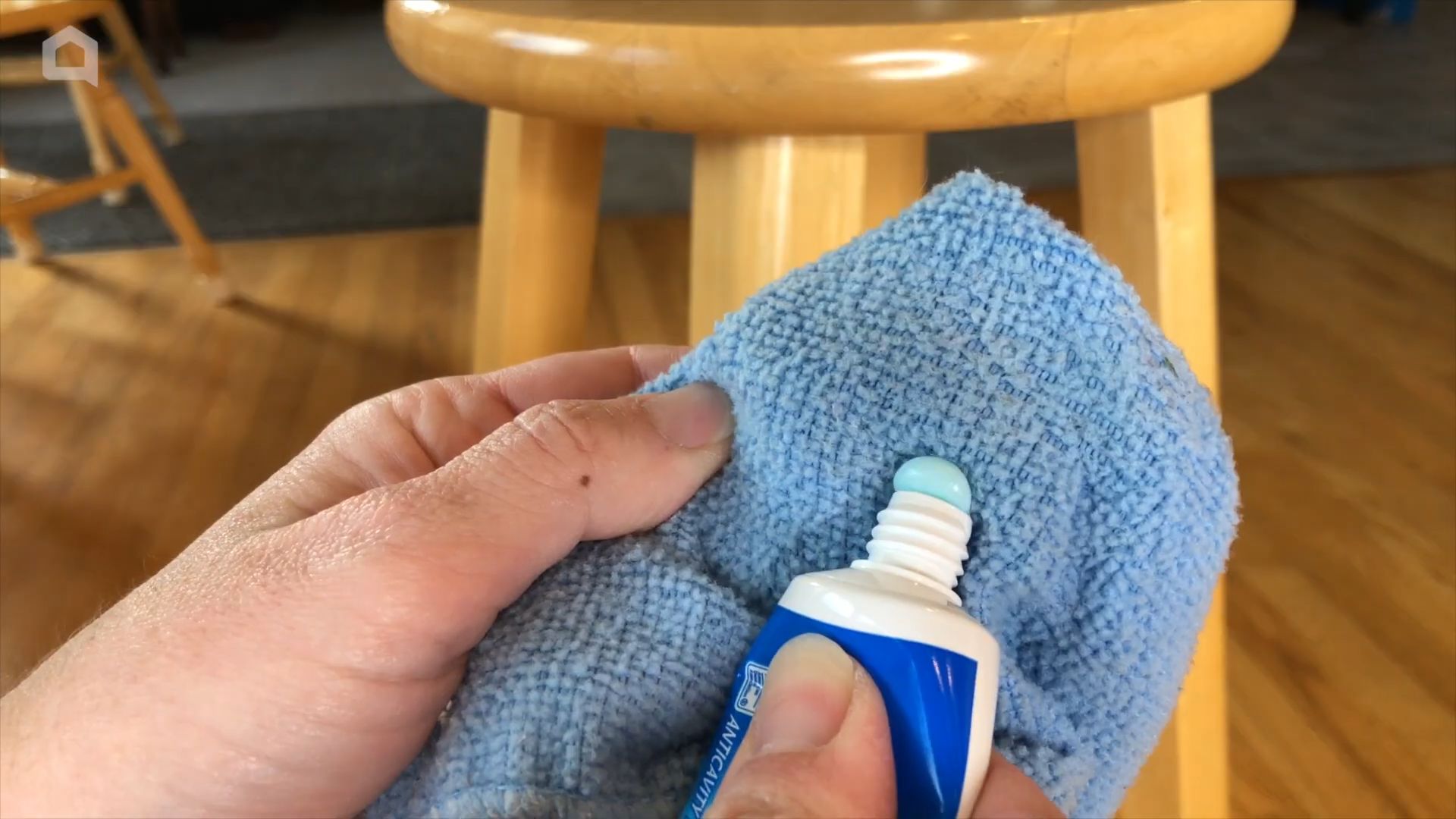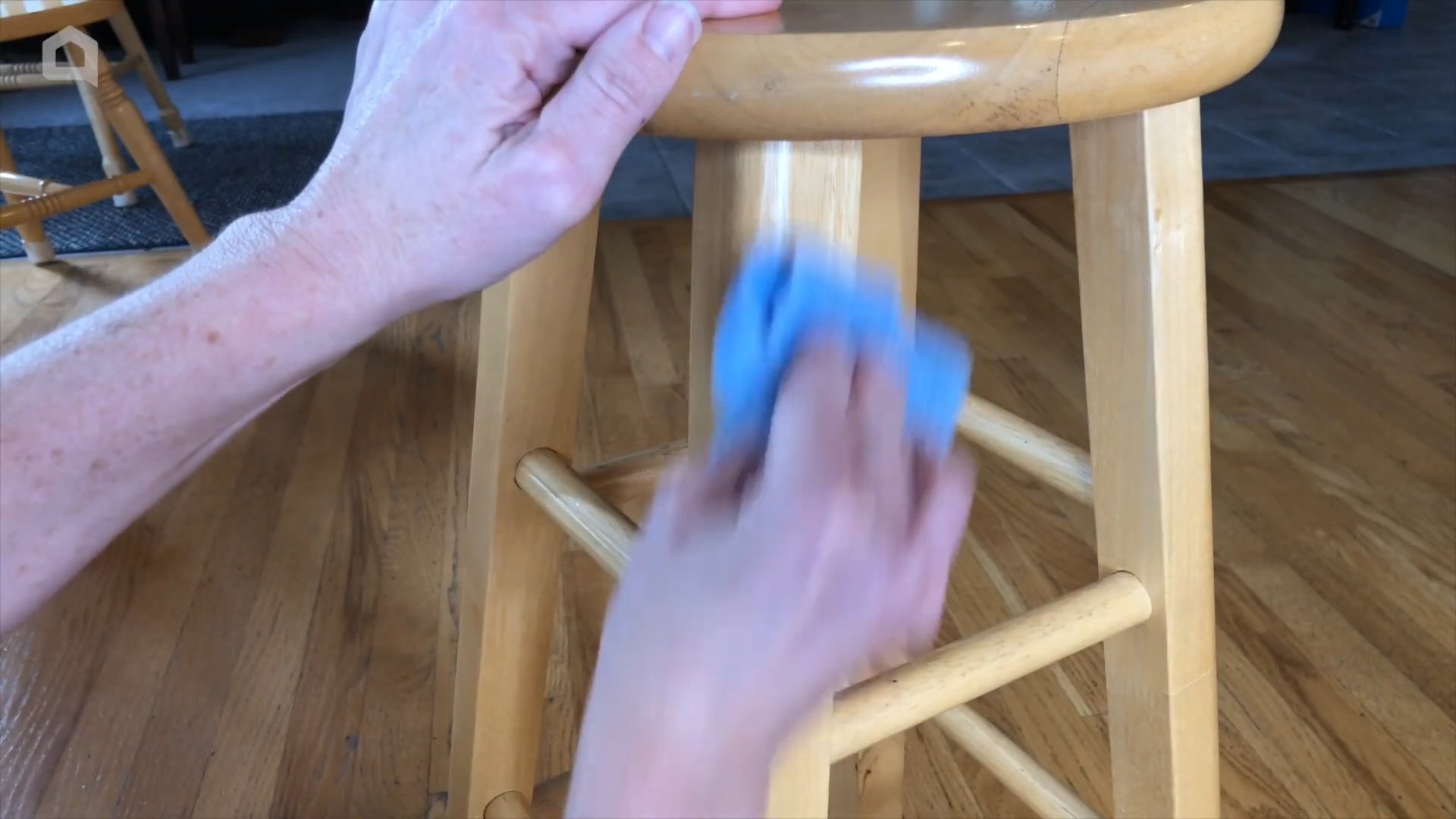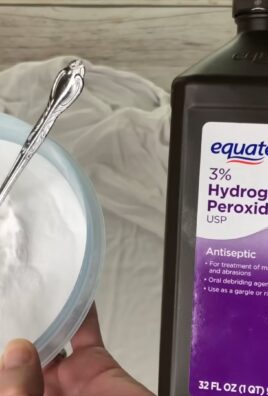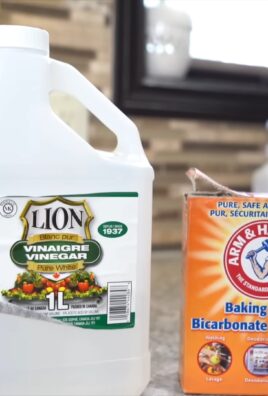Toothpaste Hacks and Uses: Beyond a sparkling smile, that humble tube in your bathroom cabinet holds a surprising arsenal of cleaning and DIY power! I know, I know, it sounds crazy, right? But trust me, you’re about to discover a whole new world of possibilities with something you probably already have on hand. For generations, toothpaste has been a staple in oral hygiene, but its versatility extends far beyond just brushing your teeth. Think back to your grandmother’s tips – she probably knew a trick or two involving this unexpected household hero!
Why should you care about these toothpaste hacks and uses? Well, let’s face it, life gets messy! From stubborn stains on your clothes to tarnished silverware, everyday challenges can leave you reaching for harsh chemicals. But what if you could tackle those problems with a gentler, more readily available solution? This article is your guide to unlocking the hidden potential of toothpaste, offering simple, effective, and budget-friendly DIY tricks that will save you time, money, and maybe even a trip to the store. Get ready to be amazed by the unexpected power of your toothpaste!

Unlocking the Unexpected: Amazing Toothpaste Hacks You Need to Know!
Okay, let’s be honest. We all have a tube of toothpaste sitting in our bathroom, right? But did you know that this everyday essential is a secret weapon for so much more than just keeping your pearly whites sparkling? I’m about to blow your mind with some seriously cool toothpaste hacks that will save you time, money, and maybe even a little bit of sanity. Get ready to be amazed!
Cleaning Powerhouse: Beyond the Bathroom Sink
Toothpaste isn’t just for teeth! Its mild abrasive properties make it a fantastic cleaner for a surprising number of things around your house. Here’s how to put it to work:
* Silverware Savior: Tarnished silver getting you down? Toothpaste to the rescue!
* Sneaker Sparkle: Dirty sneakers looking sad? Toothpaste can bring them back to life.
* Ironing Board Bliss: Scorched iron leaving marks on your ironing board? Toothpaste can help remove them.
* Chrome Champion: Dull chrome fixtures in your bathroom? Toothpaste will make them shine.
* Piano Key Perfection: Yellowed piano keys? Toothpaste can gently brighten them.
* Permanent Marker Miracle: Permanent marker on walls? Toothpaste might just be your saving grace (test in an inconspicuous area first!).
* Phone Screen Fix: Minor scratches on your phone screen? Toothpaste can sometimes minimize their appearance.
Step-by-Step Cleaning Instructions
Let’s dive into the specifics of how to use toothpaste for these cleaning tasks. Remember, a little goes a long way!
1. Silverware Shining
1. Gather Your Supplies: You’ll need toothpaste (a non-gel variety works best), a soft cloth, and some warm water.
2. Apply the Toothpaste: Squeeze a small amount of toothpaste onto the tarnished silverware.
3. Gently Rub: Using the soft cloth, gently rub the toothpaste onto the silver, focusing on the tarnished areas. Avoid using excessive pressure, as you don’t want to scratch the silver.
4. Rinse Thoroughly: Rinse the silverware thoroughly with warm water, making sure to remove all traces of toothpaste.
5. Dry and Buff: Dry the silverware with a clean, soft cloth. Buff it gently to restore its shine.
2. Sneaker Whitening
1. Prepare Your Sneakers: Remove any loose dirt or debris from your sneakers with a brush or cloth.
2. Apply the Toothpaste: Apply a small amount of toothpaste (again, non-gel is best) to the dirty areas of the sneakers, especially the rubber soles and sidewalls.
3. Scrub Gently: Use an old toothbrush or a small scrub brush to gently scrub the toothpaste into the dirty areas.
4. Wipe Clean: Wipe away the toothpaste with a damp cloth.
5. Repeat if Necessary: If the sneakers are heavily soiled, you may need to repeat the process.
6. Air Dry: Allow the sneakers to air dry completely.
3. Ironing Board Stain Removal
1. Unplug Your Iron: Make sure your iron is unplugged and completely cool before starting.
2. Apply the Toothpaste: Apply a small amount of toothpaste to the scorched areas of the ironing board cover.
3. Rub Gently: Use a clean cloth to gently rub the toothpaste into the stains.
4. Wipe Clean: Wipe away the toothpaste with a damp cloth.
5. Dry Thoroughly: Allow the ironing board cover to dry completely before using the iron again.
4. Chrome Polishing
1. Apply the Toothpaste: Apply a small amount of toothpaste to the dull chrome fixtures.
2. Rub Gently: Use a soft cloth to gently rub the toothpaste onto the chrome, working in circular motions.
3. Rinse Thoroughly: Rinse the chrome fixtures thoroughly with warm water.
4. Dry and Buff: Dry the chrome fixtures with a clean, soft cloth. Buff them gently to restore their shine.
5. Piano Key Brightening
1. Apply the Toothpaste: Apply a very small amount of toothpaste to a soft, damp cloth.
2. Gently Wipe: Gently wipe each piano key with the damp cloth, being careful not to get any moisture inside the piano.
3. Wipe Clean: Wipe each key with a clean, damp cloth to remove any toothpaste residue.
4. Dry Thoroughly: Dry each key thoroughly with a clean, dry cloth.
6. Permanent Marker Removal (Proceed with Caution!)
Important Note: This method may not work on all surfaces and may potentially damage some surfaces. Always test in an inconspicuous area first!
1. Apply the Toothpaste: Apply a small amount of toothpaste to the permanent marker stain.
2. Rub Gently: Use a clean cloth to gently rub the toothpaste onto the stain.
3. Wipe Clean: Wipe away the toothpaste with a damp cloth.
4. Repeat if Necessary: You may need to repeat the process several times.
5. If the stain persists, consider using a specialized stain remover.
7. Phone Screen Scratch Minimization (Use with Extreme Caution!)
Important Note: This method is highly debated and may potentially damage your phone screen. I strongly advise against trying this unless you’re willing to risk damaging your device. If you choose to proceed, do so at your own risk and with extreme caution.
1. Apply a Tiny Amount: Apply a VERY tiny amount of non-gel toothpaste to a soft, lint-free cloth.
2. Gently Rub: Gently rub the toothpaste onto the scratched area of the screen in small, circular motions. Do this for only a few seconds.
3. Wipe Clean: Immediately wipe away all traces of toothpaste with a clean, slightly damp, lint-free cloth.
4. Dry Thoroughly: Dry the screen thoroughly with a clean, dry, lint-free cloth.
5. Inspect Carefully: Check the screen carefully for any damage. If you notice any new scratches or discoloration, stop immediately.
Beauty Boosts: Toothpaste for Skin and Nails
Believe it or not, toothpaste can also be used for a few beauty hacks!
* Spot Treatment for Blemishes: Dab a small amount of toothpaste on a pimple overnight to help dry it out.
* Nail Whitening: Scrub your nails with toothpaste to remove stains and brighten them.
Step-by-Step Beauty Instructions
Let’s get into the details of these beauty hacks.
1. Blemish Buster
1. Cleanse Your Face: Wash your face with a gentle cleanser and pat it dry.
2. Apply the Toothpaste: Dab a small amount of non-gel toothpaste directly onto the pimple.
3. Leave Overnight: Leave the toothpaste on overnight.
4. Rinse in the Morning: Rinse the toothpaste off with warm water in the morning.
5. Moisturize: Apply a moisturizer to the treated area.
Important Note: This method may not be suitable for all skin types. If you have sensitive skin, test a small area first. Avoid using toothpaste on open wounds or irritated skin. Do not use whitening toothpastes, as they can be too harsh.
2. Nail Whitening Wonder
1. Apply the Toothpaste: Apply a small amount of toothpaste to your nails.
2. Scrub Gently: Use a soft toothbrush to gently scrub the toothpaste onto your nails and under the nail edges.
3. Rinse Thoroughly: Rinse your nails thoroughly with warm water.
4. Moisturize: Apply a hand cream or cuticle oil to moisturize your nails and cuticles.
Other Clever Uses: Beyond Cleaning and Beauty
Toothpaste’s versatility doesn’t stop there! Here are a few more unexpected uses:
* Defogging Mirrors: Apply a thin layer of toothpaste to your bathroom mirror, wipe it off, and say goodbye to fog!
* Soothing Bug Bites: Apply a small amount of toothpaste to a bug bite to help relieve itching and inflammation.
* Shoe Polish Substitute: In a pinch, toothpaste can be used to polish leather shoes.
Step-by-Step Instructions for Other Uses
Let’s explore these final hacks in detail.
1. Mirror Defogger
1. Apply a Thin Layer: Apply a thin layer of non-gel toothpaste to the entire surface of your bathroom mirror.
2. Wipe Clean: Wipe away the toothpaste with a clean, damp cloth.
3. Buff Dry: Buff the mirror dry with a clean, dry cloth.
2. Bug Bite Soother
1.

Conclusion
So, there you have it! More than just a breath freshener, toothpaste is a surprisingly versatile tool with a multitude of unexpected uses around the house. From shining silverware to removing stubborn stains, these toothpaste hacks offer simple, cost-effective solutions to everyday problems. The beauty of these DIY tricks lies in their accessibility; you likely already have a tube of toothpaste in your bathroom, making these solutions readily available whenever you need them.
Why is this a must-try? Because it simplifies your life! Imagine tackling those annoying scuff marks on your shoes with a dab of toothpaste instead of reaching for harsh chemicals. Think of the satisfaction of restoring the sparkle to your jewelry with a gentle polish, all thanks to a common household item. These aren’t just quick fixes; they’re smart, sustainable alternatives that can save you time, money, and effort.
Consider these variations to further personalize your experience. For tougher stains, try using a whitening toothpaste, as the added abrasives can provide extra cleaning power. When polishing delicate surfaces like jewelry, opt for a non-gel toothpaste to minimize the risk of scratching. And for those with sensitive skin, always test a small, inconspicuous area first to ensure there’s no adverse reaction. You can even experiment with different flavors of toothpaste to add a subtle scent to your cleaning projects! Mint for a refreshing clean, or perhaps a fruity flavor for a playful touch.
We wholeheartedly encourage you to try these toothpaste hacks and discover the magic for yourself. Don’t be afraid to experiment and find what works best for you. The possibilities are endless! And most importantly, we want to hear about your experiences. Did you successfully remove a stubborn stain? Did you find a new and innovative use for toothpaste? Share your stories, tips, and tricks in the comments below. Let’s build a community of resourceful individuals who are making the most of this everyday essential. Embrace the power of toothpaste hacks and unlock a world of surprising possibilities!
Frequently Asked Questions (FAQs)
What kind of toothpaste works best for these hacks?
Generally, a plain white toothpaste (not gel) works best for most of these hacks. The abrasive properties of the white paste are what make it effective for cleaning and polishing. Gel toothpastes tend to be less abrasive and may not produce the same results. For tougher stains or polishing tasks, a whitening toothpaste can be used, but be cautious on delicate surfaces as it can be more abrasive. Always test in an inconspicuous area first.
Can I use toothpaste on all types of surfaces?
No, you should not use toothpaste on all types of surfaces. Avoid using it on porous materials like unsealed wood or delicate fabrics that could be damaged by the abrasives. Always test a small, hidden area first to ensure the toothpaste doesn’t cause any discoloration or damage. Be particularly careful with painted surfaces, as toothpaste can sometimes dull or scratch the paint.
Is it safe to use toothpaste on my skin?
While toothpaste is generally safe for short-term, targeted applications on the skin (like spot-treating pimples), it’s not recommended for prolonged or widespread use. Toothpaste can be drying and irritating to the skin, especially for those with sensitive skin. If you experience any redness, itching, or burning, discontinue use immediately and rinse the area thoroughly with water. There are many skincare products specifically formulated for treating skin conditions, which are generally a better choice than toothpaste.
Will toothpaste damage my jewelry?
Toothpaste can be used to clean and polish certain types of jewelry, but it’s important to be cautious. Avoid using toothpaste on delicate gemstones like pearls, opals, or emeralds, as the abrasives can scratch or damage them. For metal jewelry like silver or gold, use a soft cloth and gently rub the toothpaste onto the surface. Rinse thoroughly with water and dry with a clean cloth. If you’re unsure about a particular piece of jewelry, it’s best to consult a professional jeweler.
How do I remove toothpaste residue after cleaning?
Removing toothpaste residue is simple. Just rinse the area thoroughly with water and then wipe it dry with a clean cloth. For hard-to-reach areas, you can use a cotton swab or a soft brush to remove any remaining residue. Make sure the surface is completely dry to prevent water spots or streaks.
Can I use expired toothpaste for these hacks?
While expired toothpaste may not be as effective for oral hygiene, it can still be used for many of these hacks. The cleaning and polishing properties of toothpaste don’t diminish significantly over time. However, if the toothpaste has become dried out or hardened, it may be more difficult to work with.
Are there any surfaces I should absolutely avoid using toothpaste on?
Yes, there are certain surfaces you should avoid using toothpaste on. These include:
* **Porous materials:** Unsealed wood, leather, and certain fabrics can absorb the toothpaste and be difficult to clean.
* **Delicate gemstones:** Pearls, opals, emeralds, and other soft gemstones can be scratched by the abrasives in toothpaste.
* **Painted surfaces:** Toothpaste can sometimes dull or scratch paint, especially on cars or furniture.
* **Screens (phones, TVs, computers):** The abrasives can damage the screen’s coating.
How often can I use toothpaste for cleaning?
While toothpaste can be a helpful cleaning agent, it’s not meant to be used as a regular cleaning solution for everything. Overusing toothpaste can potentially damage surfaces due to its abrasive nature. Use it sparingly and only when necessary for specific tasks like removing stains or polishing small areas. For general cleaning, stick to products specifically designed for those purposes.
What are some other unexpected uses for toothpaste?
Beyond the uses mentioned in the article, toothpaste can also be used to:
* Defog bathroom mirrors: Apply a thin layer of toothpaste to the mirror, wipe it off with a damp cloth, and buff it dry.
* Remove crayon marks from walls: Gently rub toothpaste onto the crayon marks and wipe them away with a damp cloth.
* Soothe insect bites: Apply a small amount of toothpaste to the bite to relieve itching and inflammation.
* Clean piano keys: Gently wipe the keys with a damp cloth and a small amount of toothpaste, then wipe clean with a dry cloth.
Is there a difference between using toothpaste and baking soda for cleaning?
Both toothpaste and baking soda have abrasive properties that make them effective for cleaning, but there are some key differences. Toothpaste is generally less abrasive than baking soda, making it a better choice for delicate surfaces. Baking soda is a stronger cleaning agent and can be more effective for removing tough stains, but it should be used with caution on surfaces that are easily scratched. Ultimately, the best choice depends on the specific cleaning task and the type of surface you’re working wit
So, there you have it! More than just a breath freshener, toothpaste is a surprisingly versatile tool with a multitude of unexpected uses around the house. From shining silverware to removing stubborn stains, these toothpaste hacks offer simple, cost-effective solutions to everyday problems. The beauty of these DIY tricks lies in their accessibility; you likely already have a tube of toothpaste in your bathroom, making these solutions readily available whenever you need them.
Why is this a must-try? Because it simplifies your life! Imagine tackling those annoying scuff marks on your shoes with a dab of toothpaste instead of reaching for harsh chemicals. Think of the satisfaction of restoring the sparkle to your jewelry with a gentle polish, all thanks to a common household item. These aren’t just quick fixes; they’re smart, sustainable alternatives that can save you time, money, and effort.
Consider these variations to further personalize your experience. For tougher stains, try using a whitening toothpaste, as the added abrasives can provide extra cleaning power. When polishing delicate surfaces like jewelry, opt for a non-gel toothpaste to minimize the risk of scratching. And for those with sensitive skin, always test a small, inconspicuous area first to ensure there’s no adverse reaction. You can even experiment with different flavors of toothpaste to add a subtle scent to your cleaning projects! Mint for a refreshing clean, or perhaps a fruity flavor for a playful touch.
We wholeheartedly encourage you to try these toothpaste hacks and discover the magic for yourself. Don’t be afraid to experiment and find what works best for you. The possibilities are endless! And most importantly, we want to hear about your experiences. Did you successfully remove a stubborn stain? Did you find a new and innovative use for toothpaste? Share your stories, tips, and tricks in the comments below. Let’s build a community of resourceful individuals who are making the most of this everyday essential. Embrace the power of toothpaste hacks and unlock a world of surprising possibilities!
Frequently Asked Questions (FAQs)
What kind of toothpaste works best for these hacks?
Generally, a plain white toothpaste (not gel) works best for most of these hacks. The abrasive properties of the white paste are what make it effective for cleaning and polishing. Gel toothpastes tend to be less abrasive and may not produce the same results. For tougher stains or polishing tasks, a whitening toothpaste can be used, but be cautious on delicate surfaces as it can be more abrasive. Always test in an inconspicuous area first.
Can I use toothpaste on all types of surfaces?
No, you should not use toothpaste on all types of surfaces. Avoid using it on porous materials like unsealed wood or delicate fabrics that could be damaged by the abrasives. Always test a small, hidden area first to ensure the toothpaste doesn’t cause any discoloration or damage. Be particularly careful with painted surfaces, as toothpaste can sometimes dull or scratch the paint.
Is it safe to use toothpaste on my skin?
While toothpaste is generally safe for short-term, targeted applications on the skin (like spot-treating pimples), it’s not recommended for prolonged or widespread use. Toothpaste can be drying and irritating to the skin, especially for those with sensitive skin. If you experience any redness, itching, or burning, discontinue use immediately and rinse the area thoroughly with water. There are many skincare products specifically formulated for treating skin conditions, which are generally a better choice than toothpaste.
Will toothpaste damage my jewelry?
Toothpaste can be used to clean and polish certain types of jewelry, but it’s important to be cautious. Avoid using toothpaste on delicate gemstones like pearls, opals, or emeralds, as the abrasives can scratch or damage them. For metal jewelry like silver or gold, use a soft cloth and gently rub the toothpaste onto the surface. Rinse thoroughly with water and dry with a clean cloth. If you’re unsure about a particular piece of jewelry, it’s best to consult a professional jeweler.
How do I remove toothpaste residue after cleaning?
Removing toothpaste residue is simple. Just rinse the area thoroughly with water and then wipe it dry with a clean cloth. For hard-to-reach areas, you can use a cotton swab or a soft brush to remove any remaining residue. Make sure the surface is completely dry to prevent water spots or streaks.
Can I use expired toothpaste for these hacks?
While expired toothpaste may not be as effective for oral hygiene, it can still be used for many of these hacks. The cleaning and polishing properties of toothpaste don’t diminish significantly over time. However, if the toothpaste has become dried out or hardened, it may be more difficult to work with.
Are there any surfaces I should absolutely avoid using toothpaste on?
Yes, there are certain surfaces you should avoid using toothpaste on. These include:
* **Porous materials:** Unsealed wood, leather, and certain fabrics can absorb the toothpaste and be difficult to clean.
* **Delicate gemstones:** Pearls, opals, emeralds, and other soft gemstones can be scratched by the abrasives in toothpaste.
* **Painted surfaces:** Toothpaste can sometimes dull or scratch paint, especially on cars or furniture.
* **Screens (phones, TVs, computers):** The abrasives can damage the screen’s coating.
How often can I use toothpaste for cleaning?
While toothpaste can be a helpful cleaning agent, it’s not meant to be used as a regular cleaning solution for everything. Overusing toothpaste can potentially damage surfaces due to its abrasive nature. Use it sparingly and only when necessary for specific tasks like removing stains or polishing small areas. For general cleaning, stick to products specifically designed for those purposes.
What are some other unexpected uses for toothpaste?
Beyond the uses mentioned in the article, toothpaste can also be used to:
* Defog bathroom mirrors: Apply a thin layer of toothpaste to the mirror, wipe it off with a damp cloth, and buff it dry.
* Remove crayon marks from walls: Gently rub toothpaste onto the crayon marks and wipe them away with a damp cloth.
* Soothe insect bites: Apply a small amount of toothpaste to the bite to relieve itching and inflammation.
* Clean piano keys: Gently wipe the keys with a damp cloth and a small amount of toothpaste, then wipe clean with a dry cloth.
Is there a difference between using toothpaste and baking soda for cleaning?
Both toothpaste and baking soda have abrasive properties that make them effective for cleaning, but there are some key differences. Toothpaste is generally less abrasive than baking soda, making it a better choice for delicate surfaces. Baking soda is a stronger cleaning agent and can be more effective for removing tough stains, but it should be used with caution on surfaces that are easily scratched. Ultimately, the best choice depends on the specific cleaning task and the type of surface you’re working with.




Leave a Comment